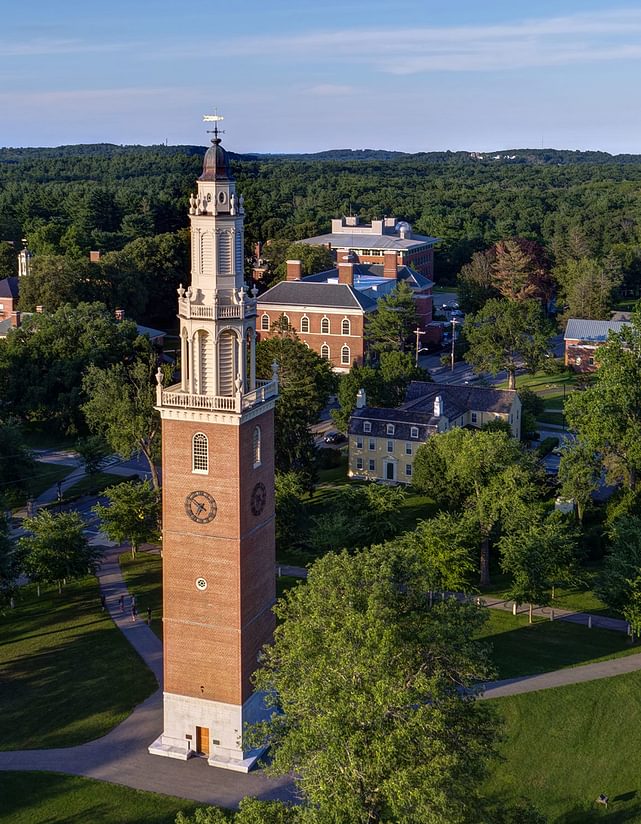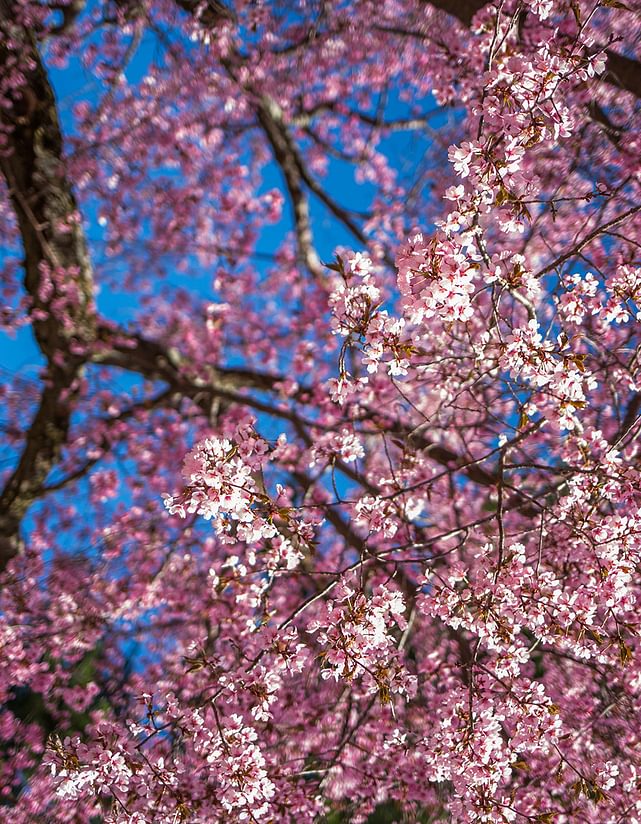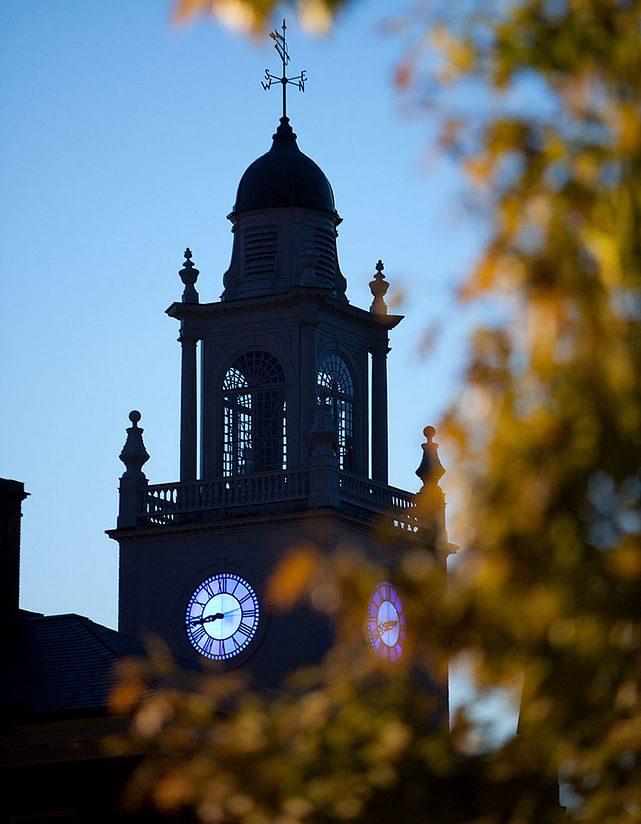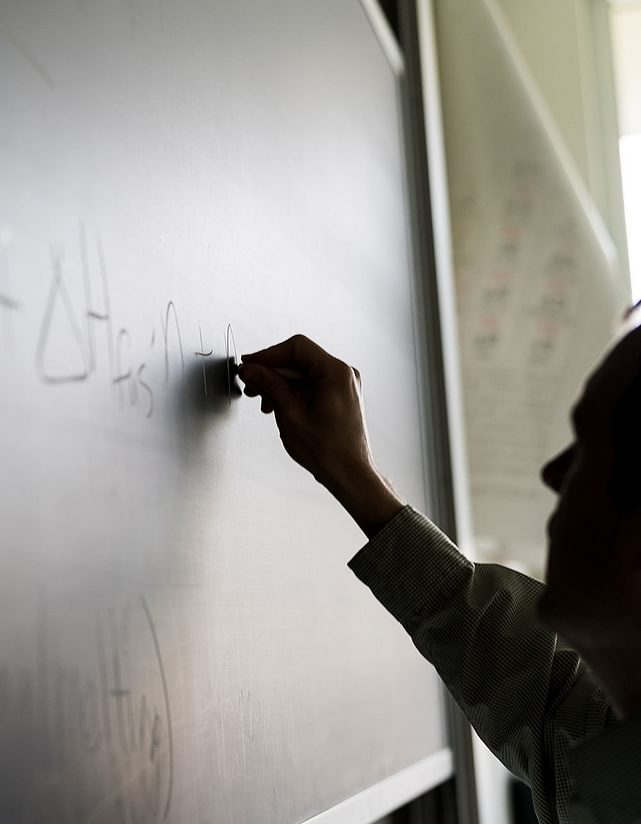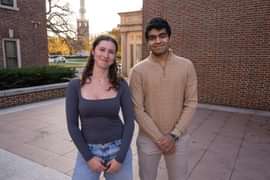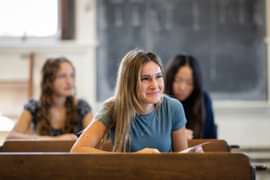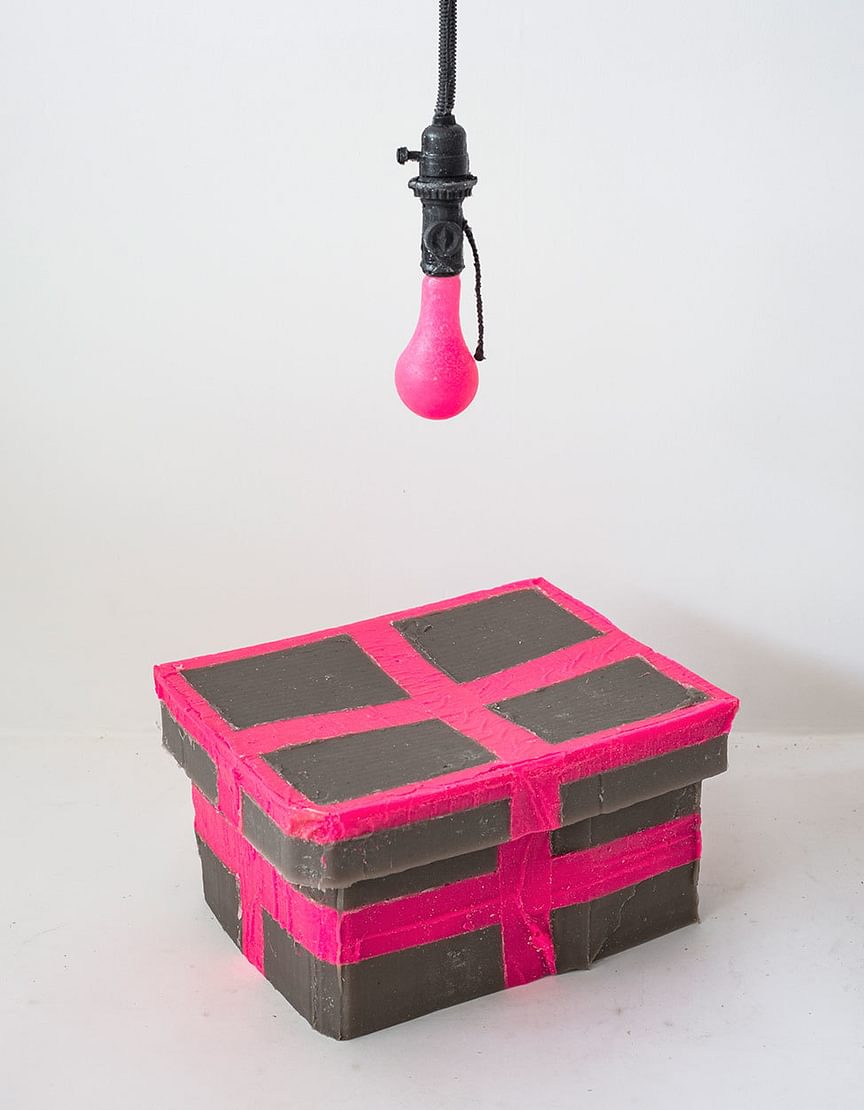
September 06, 2017
On view this fall at the Addison
Elaine Reichek and Jeanne Silverthorne to explore invisibility in a new collaborative project at the Addison Galleryby Rebecca Mongeon
This fall at the Addison Gallery of American Art artists Elaine Reichek and Jeanne Silverthorne will team up to present Invisible Citings, an installation exploring their shared interest in text and notions of invisibility. As the so-called Gutenberg age gives way to glowing screens, Invisible Citings celebrates writing as material and medium and looks to the printed page to consider invisibility. Weaving Reichek’s embroidery and Silverthorne’s sculpture together with classic and contemporary literature, the exhibition, on view September 1–December 31, 2017, addresses themes such as the legible and the obscured, word and image, illumination and luminescence, archiving and discarding. In conjunction with the exhibition, Reichek and Silverthorne will be the Addison’s Edward E. Elson Artists-in-Residence.
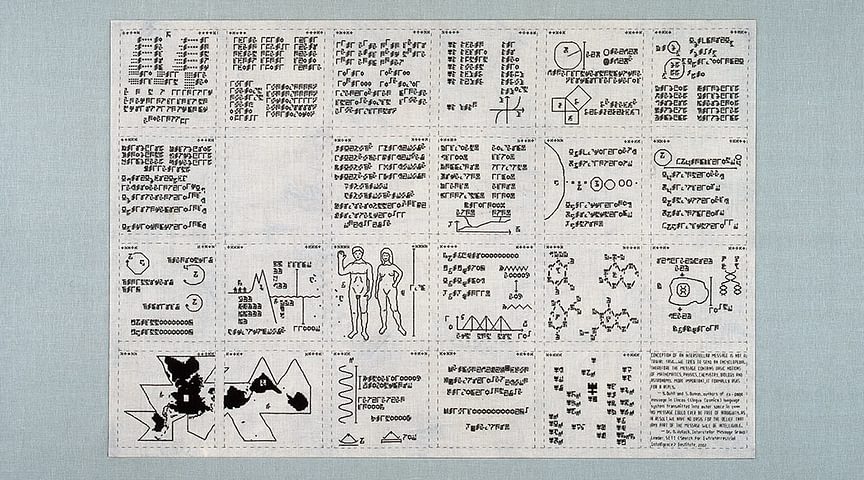
Invisibility is not a new topic for these artists. Reichek has long combined image and text in provocative hand stitchings that rethink the role of craft in the fine arts and investigate narratives and languages generally excluded from mainstream histories and the art historical canon. Silverthorne’s quirky and poignant cast rubber sculptures—sometimes paired with text—evoke things unnoticed and unseen: outmoded, dilapidated objects, things lost to deep storage, and obsolete traditions. Compiling and reading diverse texts and then painstakingly translating them into compelling works of art, Reichek and Silverthorne marry their signature styles with passages from writings as diverse as: “O May I Join the Choir Invisible” by George Eliot, The Invisible Man by H. G. Wells, Alice’s Adventures in Wonderland by Lewis Carroll, Invisible Man by Ralph Ellison, The Albertine Workout by Anne Carson, Republic by Plato, Invisible Cities by Italo Calvino, “The Yellow Wallpaper” by Charlotte Perkins Gilman, an article by Elena Ferrante, and a Rolling Stoneinterview with musician Brian Wilson.
Among the objects Silverthorne presents in this installation are numerous cast rubber “cardboard” filing boxes, each containing a stack of one thousand apparently blank letter-sized pages. On some of the sheets, however, Silverthorne has painstakingly copied in invisible ink, in her own handwriting, a text on some aspect of invisibility. Depending on the length of the text that Silverthorne chose to copy, the number of inscribed sheets of paper in a box ranges from 30 to 700. An important element of this work involves the viewer’s faith in Silverthorne’s claim that the pages do, in fact, contain writing. While some of these paper-filled boxes will be open and illuminated with ultraviolet light so that viewers may investigate for themselves whether or not the pages are blank, the majority remain closed and their contents inaccessible. Instead, we are left to imagine the artist’s invisible handwriting, the hidden texts, and the unseen hours spent manually copying them.
As the range of texts and associated ideas presented in this exhibition attest, invisibility is all around us.
”Translating handwriting on paper into sewn thread on linen, Reichek, like Silverthorne, uses script derived from the old-fashioned Palmer method of cursive writing that was drilled into schoolchildren across the nation from the 1880s to around 1950, and is now practically obsolete. Often modeled on the handwriting of either Silverthorne or Reichek herself, the embroidered scripts render texts legible and materialize invisible thoughts; each stitch also makes visible the labor and hours spent creating the work. As revelatory as they are by comparison with the sealed storage boxes, the embroideries also contain secrets. Many of them employ a glow-in-the-dark thread, a parallel to Silverthorne’s invisible ink and compromised legibility. The phosphorescent thread only becomes fully visible in the dark or under ultraviolet light, just as Silverthorne’s ink remains invisible without the aid of the ultraviolet spectrum.
Together and in their respective contributions, Silverthorne and Reichek play with how invisible thought becomes materialized, and complicate the ancient, simple, yet laboriously learned skill of writing by hand. In privileging pre-modern forms of appropriation and compilation far slower than the instantaneity promised by today’s digital and photographic technologies, both artists aspire in Invisible Citings to create a transitional space for looking, reading, and contemplation.
“As the range of texts and associated ideas presented in this exhibition attest, invisibility is all around us,” states Allison Kemmerer, the Addison’s Curator of Art After 1950. “Despite our efforts to see and know everything, there will always be phenomena too sophisticated or elusive for our humble eyes or cutting-edge technology. In this space we are able to see what is not readily apparent. And in pondering the unseen, we actually see quite a bit about ourselves.”
As Edward E. Elson Artists-in-Residence, Reichek and Silverthorne first visited Phillips Academy this spring, hosting an open house for students and teachers, discussing inspiration for their project and demonstrating writing in invisible ink. The artists will return to campus in September to work with students in English and art classes, both from the Academy and from area public schools. Through exploration of Invisible Citings and conversations with the artists, the students will connect themes in the exhibition with their coursework.
The exhibition will be accompanied by an illustrated 56-page catalogue. The publication includes an essay by Kemmerer, excerpts of conversations between the two artists, an annotated bibliography of texts cited, as well as images of the works.
 Elaine Reichek, For Now (To the Lighthouse), 2016
Elaine Reichek, For Now (To the Lighthouse), 2016
The Addison will celebrate the opening of Invisible Citings and three exhibitions of works drawn from its extraordinary collection of American art with a reception on Friday, September 15, from 6 to 8 p.m. Additionally, the artists will give a talk about their collaboration and exhibition on Sunday, September 17, at 2 p.m. Both events are free and open to the public.
The Addison Gallery of American Art, Phillips Academy, Andover, Massachusetts, is open to the public from Tuesday through Saturday, 10 a.m.–5 p.m., and Sunday 1–5 p.m. The Gallery is closed on Mondays, national holidays, December 24, and the month of August. Admission to all exhibitions and events is free. The Addison Gallery also offers free education programs for teachers and groups. For more information, call 978-749-4015, or visit the website at www.addisongallery.org.
Support
Invisible Citings is generously supported by the Edward E. Elson Artist-in-Residence Fund; The Coby Foundation, Ltd.; Mary Bucksbaum Scanlan and Patrick Scanlan; the Singer Family Foundation; an anonymous donor; and Francis Greenburger. An important contribution from Kyra Tirana Barry made the catalogue possible.
About the Artists
Elaine Reichek was born in New York City in 1943. She received a BA from Brooklyn College in 1963 where she studied painting with Ad Reinhardt. The following year, she received a BFA from Yale University. Reichek has exhibited extensively in the United States and abroad, with solo exhibitions in Amsterdam (Stichting De Appel); Brussels (Palais des Beaux-Arts); Columbus, Ohio (Wexner Center for the Arts); Dublin (Irish Museum of Modern Art); New York (Jewish Museum; Museum of Modern Art); and Tel Aviv (Museum of Art). Her work is in collections around the world, including those of the Isabella Stewart Gardner Museum and the Museum of Fine Arts (both Boston); the Irish Museum of Modern Art, Dublin; the Spencer Museum of Art, University of Kansas, Lawrence; the Jewish Museum, the Museum of Arts and Design, the Museum of Modern Art, the Whitney Museum of American Art, and the Brooklyn Museum (all New York); the Norton Museum of Art, Palm Beach; and the Pennsylvania Academy of the Fine Arts, Philadelphia, among others. Currently on display on the Isabella Stewart Gardner Museum’s Anne H. Fitzpatrick façade, is Reichek’s Ever Yours, Henry James, a graphic sampler composed of fragments from Henry James’s letters to Isabella Stewart Gardner. Reichek lives and works in New York.
Born in 1950 in Philadelphia, Jeanne Silverthorne received a BA, MA, and PhD from Temple University. Her numerous solo exhibitions have been held at PS 1, New York; the Institute of Contemporary Art, Philadelphia; the Phillips Collection, Washington, D.C.; the Whitney Museum of American Art, New York, and at galleries in New York and Los Angeles, as well as abroad—Paris; Seoul; Verona, Italy; and Ireland. A mid-career survey of her work was held at the Wright Museum of Art in Beloit, Wisconsin, in 1998. Silverthorne’s art has also been featured in exhibitions held at the Museum of Modern Art, New York; the San Francisco Museum of Modern Art; the Albright-Knox Museum, Buffalo; and the ICA, Boston, among other museums. Her work is held in the collections of many institutions in the US, including the Museum of Fine Arts, Houston; the Museum of Modern Art, New York; the Phillips Collection, Washington, D.C.; San Francisco Museum of Modern Art; the Whitney Museum of American Art, New York; and the Rhode Island School of Design Museum, Providence. Internationally, Silverthorne’s work is represented in the Fondation nationale d’art contemporain, France, and the Leeum, Samsung Museum of Art, Seoul. She lives in New York and teaches at the School of Visual Arts.
About the Edward E. Elson Artist-in-Residence Program
The Addison’s Artist-in-Residence program, which began in 1946 with Charles Sheeler, plays a critical role in the museum’s exhibition and education programming. Endowed in 1982 through the generosity of Phillips Academy alumnus Edward E. Elson, the program has energetically supported contemporary art by bringing established and emerging artists to campus to create and exhibit work as well as engage with students. Participating artists have included Frank Stella, Robert Frank, Alison Saar, Joel Shapiro, Robert Hudson, Richard Shaw, Kerry James Marshall, Dawoud Bey, Glen Seator, Tony Feher, Jose Bedia, James Casebere, Anna Gaskell, Andrea Zittel, Jessica Stockholder, Lee Mingwei, Trisha Brown, Fred Wilson, Wendy Ewald, Jim Hodges, Sue Williams, Terry Winters, Alexis Rockman, Type A, William Wegman, Tristan Perich, Laurel Nakadate, James Prosek, Lorna Simpson, Laurie Simmons, and Triple Candie.
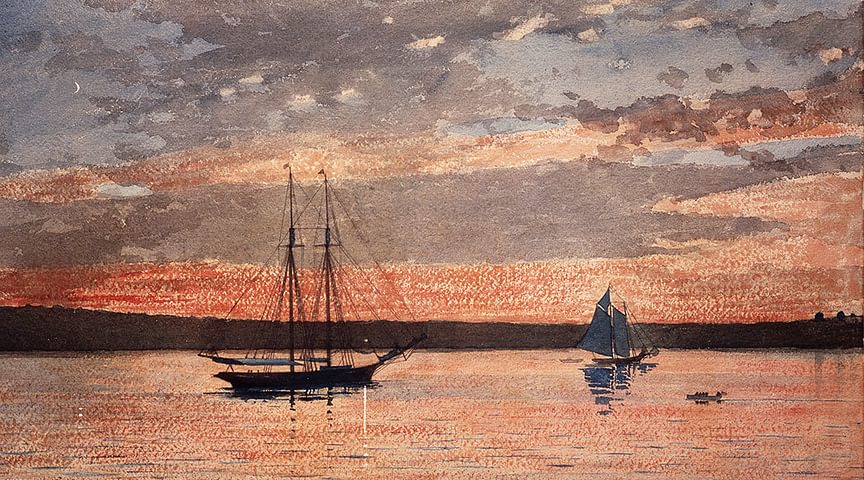
Also on view this fall
Three exhibitions of works drawn from the museum’s permanent collection will open in September. As a complement to Invisible Citings, Seen and Unseen will bring together objects by contemporary artists such as Glenn Ligon, Sarah Charlesworth, and Dawoud Bey that similarly combine word and image as well as explore the notion of invisibility, and will open on September 1. Eye on the Collection, also opening September 1, will present paintings, photographs, and sculpture from the 18th through 20th centuries, among them both old favorites and less well-known works, by artists including Josef Albers, Frederic Church, Imogen Cunningham, Edward Hopper, Georgia O’Keeffe, Charles Sheeler, and James McNeill Whistler. And from September 15 through October 15, the museum will display rarely exhibited watercolors by recognized masters of the medium—Arthur B. Davies, Winslow Homer, John La Farge, Thomas Moran, Maurice Prendergast, and John Singer Sargent—in Color and Light: Watercolors from the Collection.
Later this fall, the Addison will present Mark Tobey: Threading Light, the first comprehensive retrospective of the artist’s work in twenty years. Following its display at the Peggy Guggenheim Collection in Venice, Italy, the exhibition will open at the Addison on November 4. Threading Light, organized by the Addison and guest curated by Debra Bricker Balken, traces the evolution of the artist’s groundbreaking style and his significant yet under-recognized contributions to abstraction and mid-century American modernism. With 70 paintings spanning the 1920s through 1970, Threading Light surveys the breadth of Tobey’s oeuvre and reveals the extraordinarily nuanced yet radical beauty of his work. The exhibition will be on view at the Addison through March 11, 2018.
